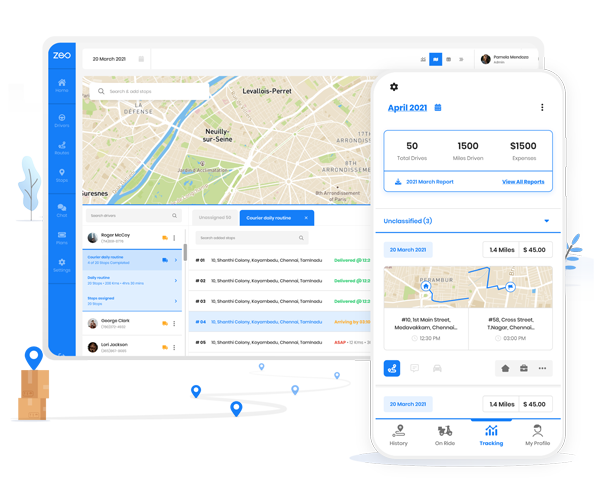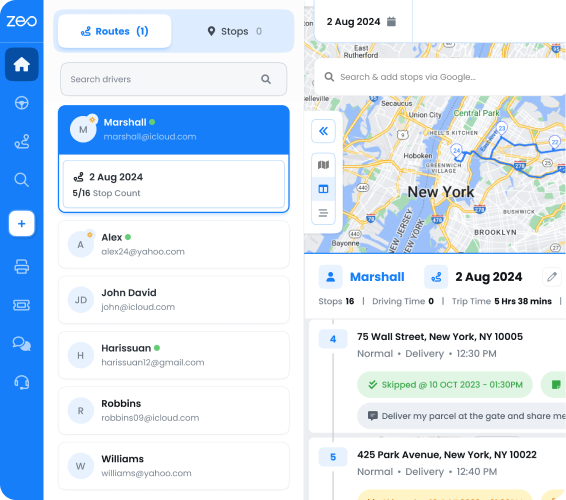Successful last-mile deliveries are not an easy feat. Different cogs of the wheel have to move in tandem for an e-commerce business to operate smoothly.
From accurately processing the orders to ensuring sufficient levels of inventory to packaging and shipping the orders to final delivery – every function has a crucial role to play. However, for delivery to be considered a success, the package has to reach the customer’s hands on the first attempt. First Attempt Delivery Rate (FADR) is a critical metric for any e-commerce or courier business.
In this blog, we’ll explain what the first attempt delivery rate is, why it is important, what are the consequences of failed deliveries and how businesses can improve FADR.
What is the First Attempt Delivery Rate (FADR)?
First Attempt Delivery Rate (FADR) refers to the percentage of shipments or deliveries that are successfully delivered on the first attempt, without requiring additional delivery attempts. It’s an important key performance indicator (KPI) used to measure the efficiency of the delivery process.
FADR = (Number of deliveries delivered on the first attempt / Total number of deliveries) * 100
Let’s say a courier company made 100 delivery attempts in a day. Out of those, they delivered 85 packages on the
first attempt. To calculate the First Attempt Delivery Rate:
FADR = (85 / 100) * 100 = 85%
In this example, the First Attempt Delivery Rate is 85%, which means that 85% of the packages were delivered on the first attempt.
Companies try to maintain an FADR of >90%. FADR of >95% is considered excellent.
Why is FADR important?
The higher the FADR, the more efficient the delivery process is. Maintaining a high FADR is also important for the below-mentioned reasons:
To Maintain Brand Reputation
A business that makes on-time deliveries on the first attempt is considered reliable by the customers. Customers who have a positive experience help by sharing it with their network. Word of mouth creates and maintains the brand reputation.
Customer Retention
Successful deliveries on the first attempt build customer trust and loyalty. If the customer is satisfied with the experience they’ll stick with you rather than explore other alternatives.
Read more: 9 Best Customer Retention Strategies For Delivery Businesses
To Stay Competitive
An excellent delivery experience can be a differentiating factor between you and your competition. With the rise of e-commerce businesses, every industry has become more competitive. Customers can conveniently switch to your competitors in case of a less-than-satisfactory experience.
What happens when a delivery is missed?
Let’s have a look at the consequences of missed deliveries:
The Additional Cost of Redelivery
When a delivery driver is unable to deliver on the first attempt, your business has to incur the cost of delivering again. That means spending on fuel and other resources twice or thrice to make a single delivery. It directly impacts the profitability of the business.
Inventory Management

increase fuel savings
Hassle Free Deliveries & Pickups!
Optimize routes with our algorithm, reducing travel time and costs efficiently.
Get Started for Free
When a package comes back due to failed delivery, it has to be accounted for in the inventory management system. The undelivered packages also occupy the storage space.
Poor Customer Experience
Customers eagerly wait for their deliveries and missed deliveries lead to customers feeling frustrated. Attempting redelivery would mean coordinating with the customer again to ensure the package is delivered on the second attempt.
What are the reasons behind failed deliveries?
A low FADR indicates potential issues in the delivery process. It could be due to multiple reasons:
- The customer is unavailable at the time of delivery.
- The customer’s address or phone number is not correct.
- The delivery driver was stuck in unforeseen traffic conditions.
- Shortage of delivery drivers or vehicles.
- The delivery driver didn’t have proper knowledge of the routes.
How to improve FADR?
Once the root cause behind low FADR is identified, it can be improved in the following ways:
Use route optimization software
Route optimization software like Zeo Route Planner enables you to plan the most efficient routes for faster deliveries. It helps in calculating accurate ETA which can be communicated to the customer. The driver can easily follow the optimized sequence created by the route planner to reach the customer on time.
Jump on a quick demo call and make Zeo a partner in your deliveries!
Let customers choose their preferred time slots
Most e-commerce businesses provide customers the option to choose from multiple delivery time slots. The customer can choose the time window that suits them best to ensure their availability at the time of delivery. You can update the time slot in the route planner so that it’s taken into account while planning the route.
Communicate with customers
Keep the customer in the loop about the progress of their delivery via texts, emails, and notifications. Also, share the live tracking link with the customer so that they can be prepared to receive the order. Zeo lets you send customized messages to the customers along with tracking link right from the app itself.
Read more: Revolutionize Customer Communication with Zeo’s Direct Messaging Feature
Track the progress of the delivery
As a fleet manager, you can keep track of the progress of deliveries from the dashboard. If the deliveries are being delayed, you can contact the drivers to identify the bottlenecks and resolve them asap.
Sign up now for a free trial and make faster deliveries to your customers!
Conclusion
First attempt delivery rate is a metric that should be a top priority for any business that involves last-mile deliveries. It is important to maintain a high FADR for the long-term success of the business. Follow the simple yet effective strategies mentioned in this blog to provide an exceptional delivery experience to your customers!

Are you a fleet owner?
Want to manage your drivers and deliveries easily?
Grow your business effortlessly with Zeo Routes Planner – optimize routes and manage multiple drivers with ease.

increase fuel savings
Save $200 on fuel, Monthly!
Optimize routes with our algorithm, reducing travel time and costs efficiently.
Get Started for Free




















